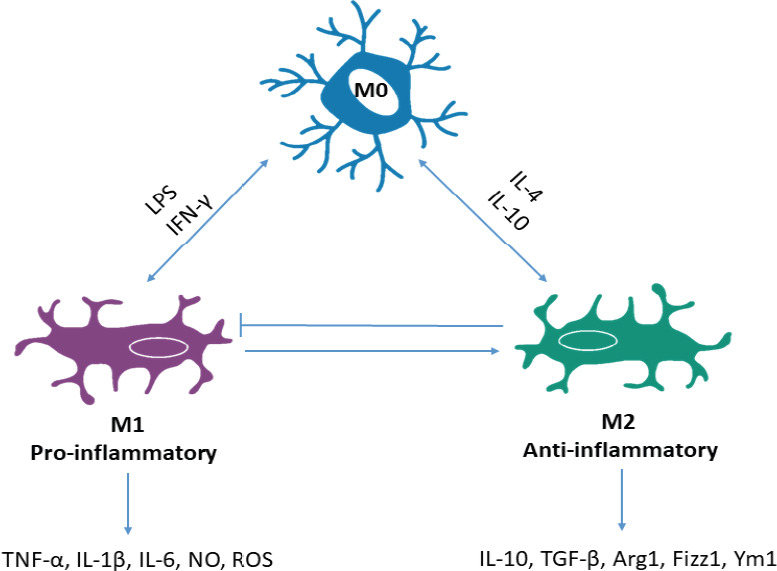Figure 5.

Microglia phenotypes.
Microglia exist in three main phenotypic states; resting microglia, seen under homeostatic conditions represent the M0 phenotype. Depending on the stimulus M0 microglia can be classically activated by LPS or IFN-γ and become M1 phenotype or M2 phenotype via alternate activation from IL-4 or IL-10. M1 represents a pro-inflammatory phenotype due to the production and secretion of inflammatory cytokines and mediators like TNF-α, IL-1β, IL-6, NO, ROS; whereas M2 are anti-inflammatory due to the production of anti-inflammatory cytokines and neuroprotective agents including IL-10, TGF-β, Arg1, Fizz1, Ym1. Furthermore, under homeostatic conditions, M1 microglia can promote M2 activity to maintain physiological levels of inflammation and M2 are able to block excess neurotoxic activity of M1. In chronic inflammation, this balance and autocrine control is lost and the M1 phenotype dominates creating a neurotoxic and pro-inflammatory environment. IFN-γ: Interferon- γ; IL: interleukin; LPS: lipopolysaccharide; ROS: reactive oxygen species; TGF-β: transforming growth factor-β; TNF-α: tumor necrosis factor-α.
